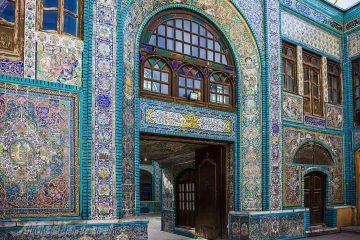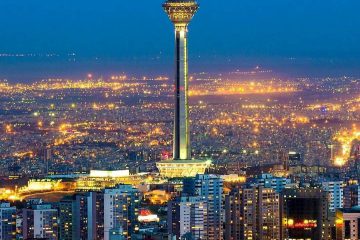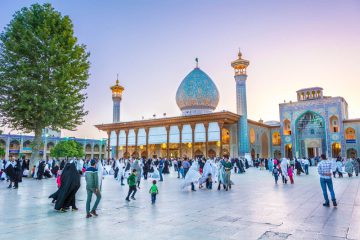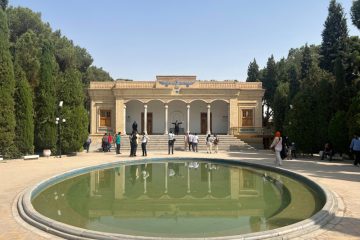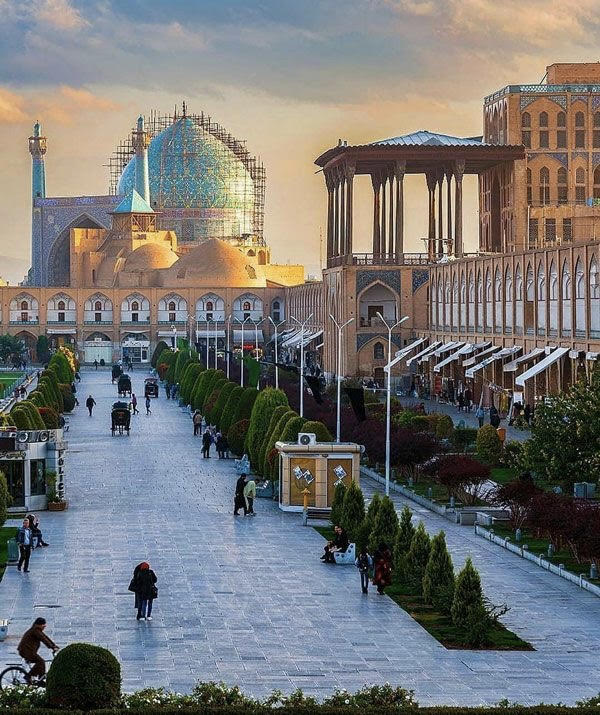
Isfahan: The city of Art
Isfahan Province: Where Beauty Meets Diversity and Every Season Sings
Isfahan province is a true gem at the heart of Iran, spanning over 106,000 square kilometers and bustling with a population of 5.082 million. Nestled among the provinces of Semnan, Qom, and Marqazi to the north, and bordered by Lorestan, Khuzestan, and Charmahal-o-Bakhtiari to the west, Fars to the south, and Yazd and Khorasan-e-Razavi to the east, Isfahan province stands out for its diverse geography. The impressive Zagros mountains guard its western and southwestern borders, offering breathtaking peaks, while other parts of the province are adorned with desert and semi-desert landscapes. The province’s highest point, Karkas, rises majestically to 3950 meters, while its lowest point near Kashan is a modest 800 meters above sea level. Over the centuries, Isfahan’s identity has evolved, from being known as Partakena in the time of the Medes (7th century BCE), with its capital named Gabay or Gey, to bearing titles like Espadana, Aspah, Aspahan, and Sepahan. Today, Isfahan’s modern name is a fusion of Espadana and Aspahan, a tribute to its vibrant history.
Isfahan province wears its seasons proudly, showcasing a climate that’s among Iran’s most enjoyable. As July and August unfold, they bring the warmth of summer, yet the temperature seldom surpasses 40 degrees. On the other hand, come January, the chill of winter arrives, sometimes dropping below -10 degrees. Isfahan’s rhythm of seasons creates a harmonious blend that’s hard to replicate.
Isfahan: The Cradle of Artistry
Stepping back into history, Isfahan emerges as a jewel that has been polished for over 500 years. This city, whether penned as Isfahan or Esfahan, stands as a historical beacon. A thriving hub of commerce, Isfahan holds the honor of being Iran’s second-largest metropolitan domain. Catering to both wanderlust and business ventures, Isfahan extends a warm invitation to explorers. Spring and autumn emerge as the perfect companions to witness its charms, offering a climate that remains moderate year-round and avoids the clutches of excessive dampness. Isfahan isn’t just a city; it’s a tapestry woven with threads of art, architecture, spirituality, opulence, trade, and social camaraderie.
Naghsh-e Jahan Square: A UNESCO Heritage Gem
In the heart of Isfahan lies Naghsh-e Jahan Square, a living testament to heritage and culture, rightfully adorned with the title of a UNESCO World Heritage Site. This expansive square, spanning 89,600 square meters, rests beneath the watchful gaze of historical treasures. Mosques and other architectural marvels embrace its periphery, sharing their grace with every passerby. To the north stands the Isfahan Grand Bazaar, a 17th-century marvel inviting patrons to explore Persian handicrafts, rugs, intricate tablecloths, and mesmerizing mosaic tiles. Shah Mosque and Sheikh Lotf Allah Mosque grace the square’s flanks, inviting visitors to bask in their architectural splendors and historical significance.
Ali-Qapu: Where History Meets Extravagance
Southeast of Naqsh-e Jahan Square, the grandeur of Ali-Qapu beckons. Its journey began in 1590, its architecture evolving over time until the 17th century. Islamic art and intricate designs grace both the inner and outer walls, painting a vivid picture. Verandas and the grand entrance gate are adorned in shades of lush green and deep blue, embellished with exquisite tile art that brings ancient tales to life.
Bridges that Connect More Than Water
Isfahan’s bridges go beyond mere crossings; they unite eras. The Khaju Bridge, a symbol of architectural excellence, was crafted in 1650 CE. Beyond its function as a bridge, it doubles as a dam and a gathering spot for souls. Its lower level is an ideal path for leisurely walks, a serene escape from the urban bustle. Echoing through time, the Shahrestan Bridge, established in the 12th century, stands as an enduring testament. And in the league of Isfahan’s bridges, Joui takes the crown with its impressive span of 967 feet.
Manar Jonban: Whispers of Mysticism
A testament to centuries past, Manar Jonban, or The Swinging Minarets, stands as a testament to the mysticism that envelops Isfahan. This tomb, harking back to 1316 AD, cradles the remains of the mystic Amu Abdollah Ebne Mohammad Ebne Mahmoud. Its architectural beauty captivates, but the allure lies in its minarets. Stand against one, and a gentle sway ensues. The phenomenon repeats with the second minaret, leaving hundreds of visitors enchanted by this mystifying spectacle.
Chehel Sutun Palace: Where Elegance Resides
Spread across around 67,000 square meters, the Chehel Sutun Palace and its garden extend a gracious invitation. Built during the reign of Shah Abbas I, the palace stands as an embodiment of elegance. At the heart of the garden, an exquisite mansion adds a touch of opulence, while Shah Abbas II leaves his mark on this grand legacy
Vank Cathedral: A Magnificent Haven in Jolfa
In the heart of Jolfa, the stunning Vank Cathedral stands tall. Its creation began under Shah Abbas II’s rule in 1065 A.H, reaching completion by 1074 A.H. Inside its sacred walls, captivating paintings, intricate decorations, splendid tile work, and moving oil depictions of Christ’s life come together in a harmonious artistic display. While hints of Italy and the Netherlands grace the religious paintings, the entire church design echoes the essence of Iranian creativity.
Isfahan, where artistry dances upon history’s stage, invites you to tread its streets and breathe its stories. It’s more than a city; it’s a symphony of the senses, a masterpiece painted with the strokes of time.
Any questions about Isfahan: The City of Art? The Tours of Iran team will help you; contact us.

